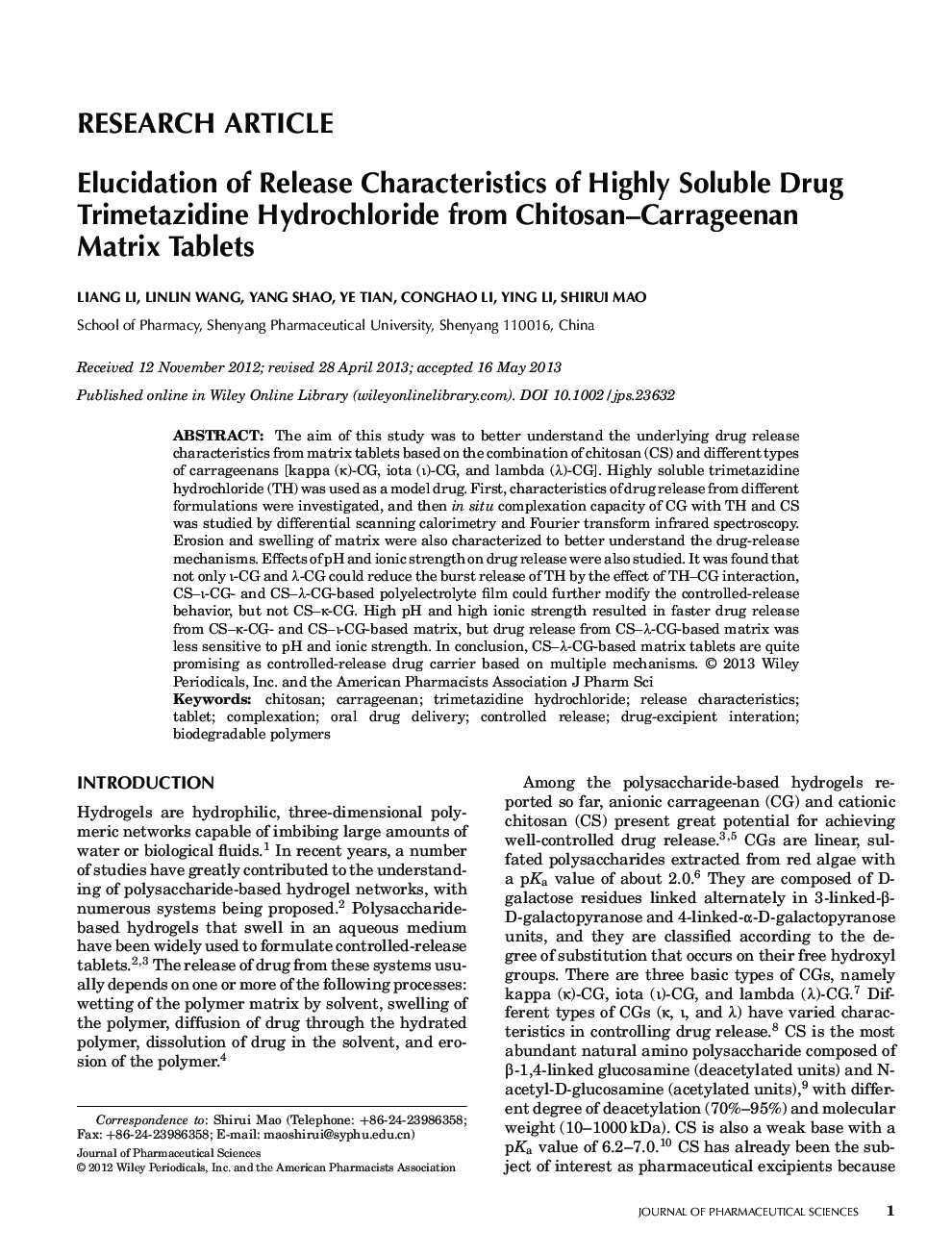| Article ID | Journal | Published Year | Pages | File Type |
|---|---|---|---|---|
| 10162693 | Journal of Pharmaceutical Sciences | 2013 | 11 Pages |
Abstract
The aim of this study was to better understand the underlying drug release characteristics from matrix tablets based on the combination of chitosan (CS) and different types of carrageenans [kappa (κ)-CG, iota (ι)-CG, and lambda (λ)-CG]. Highly soluble trimetazidine hydrochloride (TH) was used as a model drug. First, characteristics of drug release from different formulations were investigated, and then in situ complexation capacity of CG with TH and CS was studied by differential scanning calorimetry and Fourier transform infrared spectroscopy. Erosion and swelling of matrix were also characterized to better understand the drug-release mechanisms. Effects of pH and ionic strength on drug release were also studied. It was found that not only ι-CG and λ-CG could reduce the burst release of TH by the effect of TH-CG interaction, CS-ι-CG- and CS-λ-CG-based polyelectrolyte film could further modify the controlled-release behavior, but not CS-k-CG. High pH and high ionic strength resulted in faster drug release from CS-κ-CG- and CS-ι-CG-based matrix, but drug release from CS-λ-CG-based matrix was less sensitive to pH and ionic strength. In conclusion, CS-λ-CG-based matrix tablets are quite promising as controlled-release drug carrier based on multiple mechanisms. © 2013 Wiley Periodicals, Inc. and the American Pharmacists Association J Pharm Sci 102:2644-2654, 2013
Keywords
Related Topics
Health Sciences
Pharmacology, Toxicology and Pharmaceutical Science
Drug Discovery
Authors
Liang Li, Linlin Wang, Yang Shao, Y.E. Tian, Conghao Li, Ying Li, Shirui Mao,
